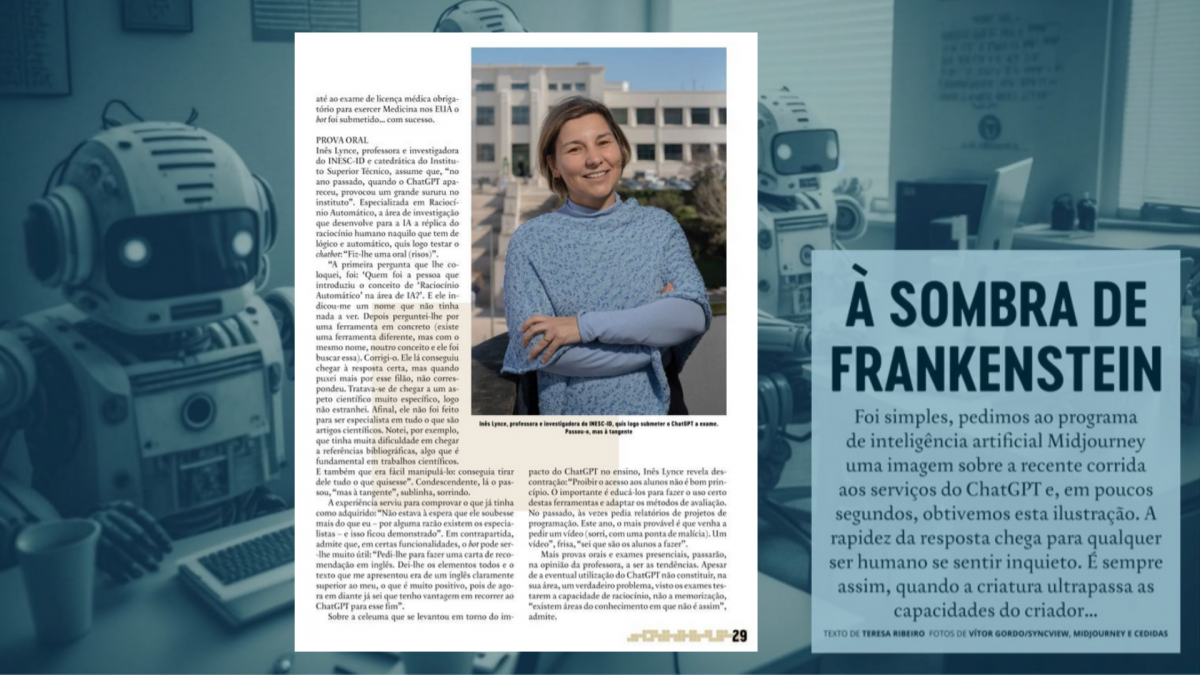
Inês Lynce discusses AI and ChatGPT in “Comunicações” magazine
Inês Lynce — Automated Reasoning and Software Reliability researcher at INESC-ID, as well as President of its Board of Directors, and Full Professor at Instituto Superior Técnico — discussed AI and one of its most recently notorious outputs, ChatGPT, in the recent issue of Comunicações magazine.
In a piece titled À sombra de Frankenstein (In Frankenstein’s Shadow), Professor Lynce tells us what “tests” she initially put ChatGPT through and how she concluded that this chatbot was highly malleable in its replies: “The first question I wrote was: ‘Who was the person who introduced the concept of ‘Automated Reasoning’ in the area of AI?’. And he gave me a name that had nothing to do with it. Then I asked him for a specific tool (there is a different tool, but with the same name, in another concept and he went to get that one). I fixed it. He managed to arrive at the right answer there, but when I pushed further along that vein, it didn’t match. It was about reaching a very specific scientific aspect, so I wasn’t surprised. After all, he wasn’t made to be an expert on all things that pertain to scientific articles.”
And are artificial intelligence chatbots, and similar tools, the way forward for scientific and technological innovation? “A machine can give me clues based on its knowledge of trends, but in the sense of conceiving, of experimenting, it is not a person who is there. It’s just a thing that has a taste of reality. If we want to draw a line for machines, I think it’s their ability to create something disruptive” Professor Lynce concludes.
You can read the complete piece, in Portuguese, here.
